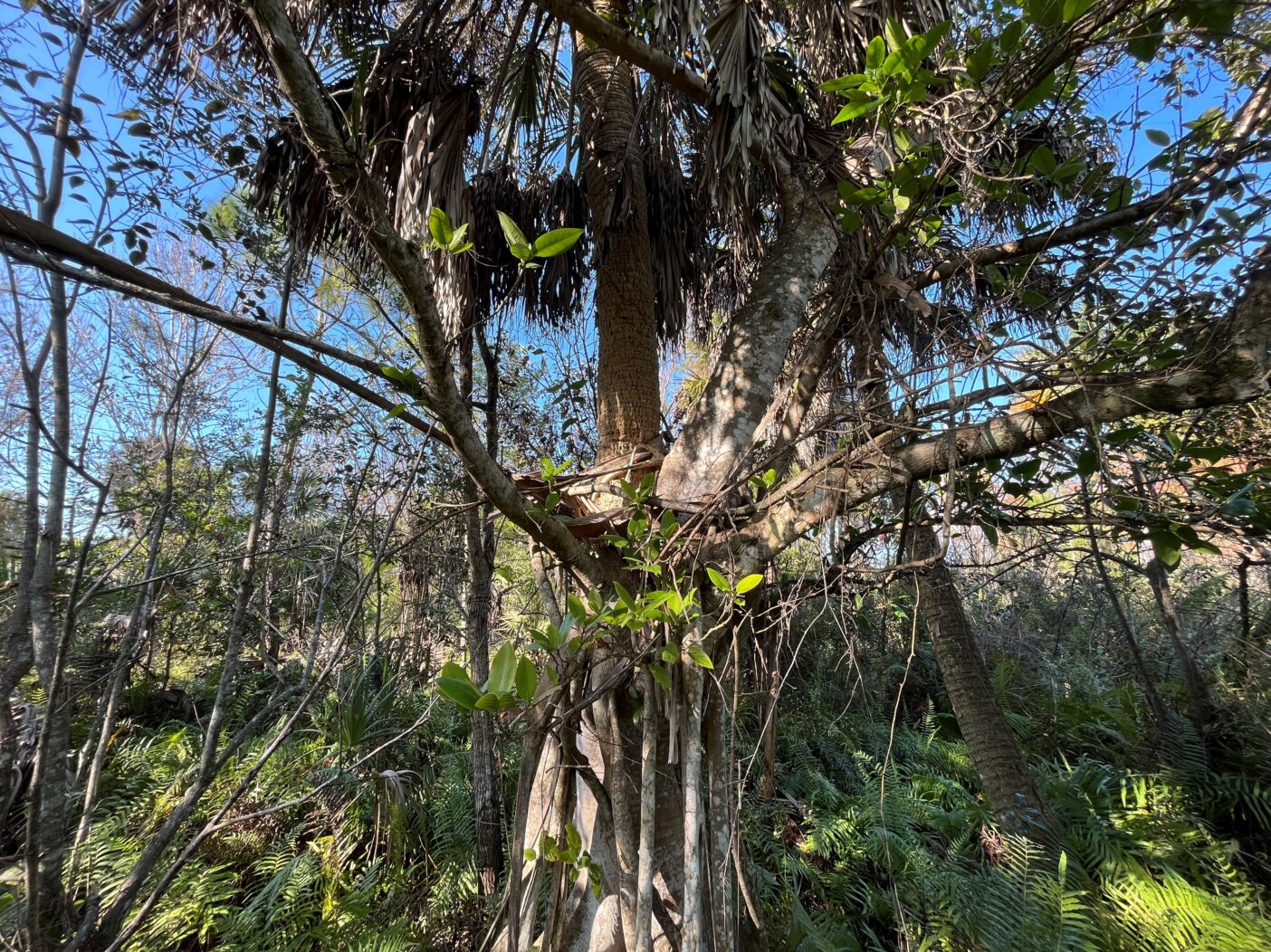

This blog supports this year’s Intertwined theme, which explores the connections in the natural world and the bond between people and plants.
Many view strangler figs (Ficus spp.) as tree killers or intrusive pests thanks to their sprawling roots, “strangling” trunks, and, yes, the fact that they eventually kill their hosts. But before that murderous outcome, they support their ecosystem in many ways.
Strangler figs can be found around the world, from Australia to Africa to South Florida. Strangler figs begin their lives as seeds, but you won’t often find these seeds sprouting from the ground. Instead, these trees begin as epiphytes, or plants that grow on other plants. Their seeds usually are deposited via bird droppings in the nooks and crannies of mature trees and palms. There, the figs begin sprouting leaves, limbs, and roots that slowly reach toward the ground. The figs’ dangling roots then thicken into trunks that constrain their host trees, while their branches overtake the host tree’s canopy, resulting in the eventual death of the host. But before such harm, strangler figs are the perfect guests.

Strangler figs support their host trees with their scaffolding-like roots, which help withstand the ravages of storms. In Australia, for example, Ficus benjamina has been found to help its hosts remain standing in a hurricane. It appears the tree’s aerial roots become entangled in other vegetation or rooted in the ground, keeping the host plants anchored and stable. Also, their branches and leaves help fill gaps in the canopies of forests, blocking wind from storms. The longer the host plant remains upright, the more chances it has to flower and fruit, passing on its genetics to future generations.
Strangler figs produce fruits as well, and these are valuable to wildlife such as cedar waxwings (Bombycilla cedrorum) and other species of birds that eat the fruit and deposit its seeds into the nooks and crannies of new host trees. The fig trees also support communities of insects by providing a place to live, thus providing a food source for insectivorous birds. Ficus aurea, Florida’s native strangler fig, is the larval host plant for daggerwing butterflies (Marpesia petreus) and fig sphinx moths (Pachylia ficus), a possible pollinator of the ghost orchid (Dendrophylax lindenii). Ghost orchids have become a symbol of conservation in South Florida; it is important to remember that conserving one plant involves conserving the plant’s entire habitat because most plants require pollinators, and pollinators require food and shelter.
It’s worth noting that strangler figs don’t always need to entwine themselves among other trees; in the Lea Asian Garden, you can see an example of a solitary strangler growing from the rock. It’s the tree under which the Buddha statue sits.

The story of strangler figs offers a great example of the interconnectedness of plants, animals, and entire ecosystems. And while this species can harm their host trees, they are indispensably interconnected with other flora and fauna. Next time you’re walking through the Garden, find peace and enlightenment under a strangler fig’s canopy in our Preserve, where you will see many growing on cabbage palms, or our spotlighted specimen in the Lea Asian Garden near Fogg Café.

About the Author
Patrick Deja is an Educator II at Naples Botanical Garden. When not at the Garden, he loves to spend time with his wife and daughter. He also enjoys traveling and learning, whether it is about plants, history, language, or science.

